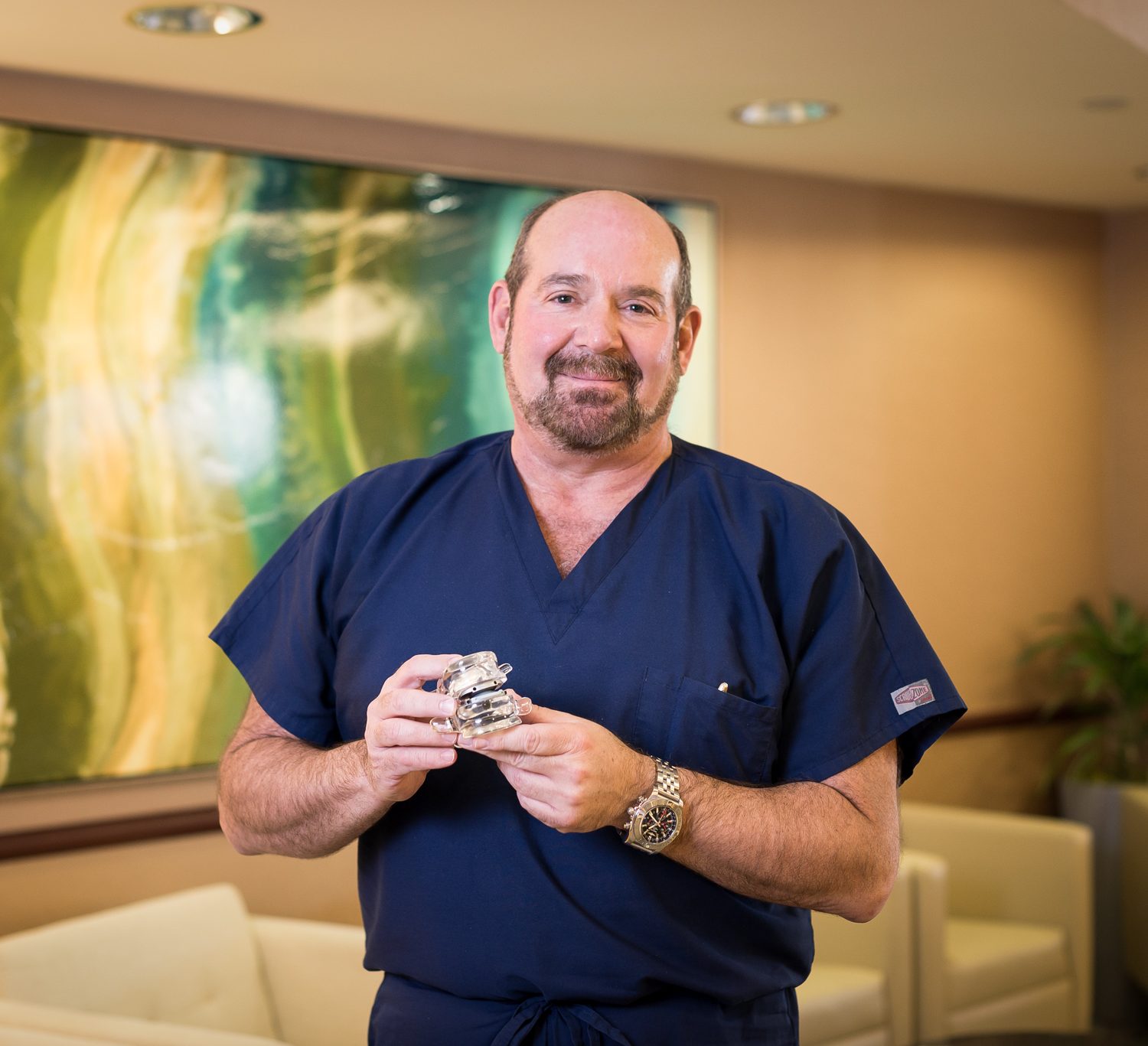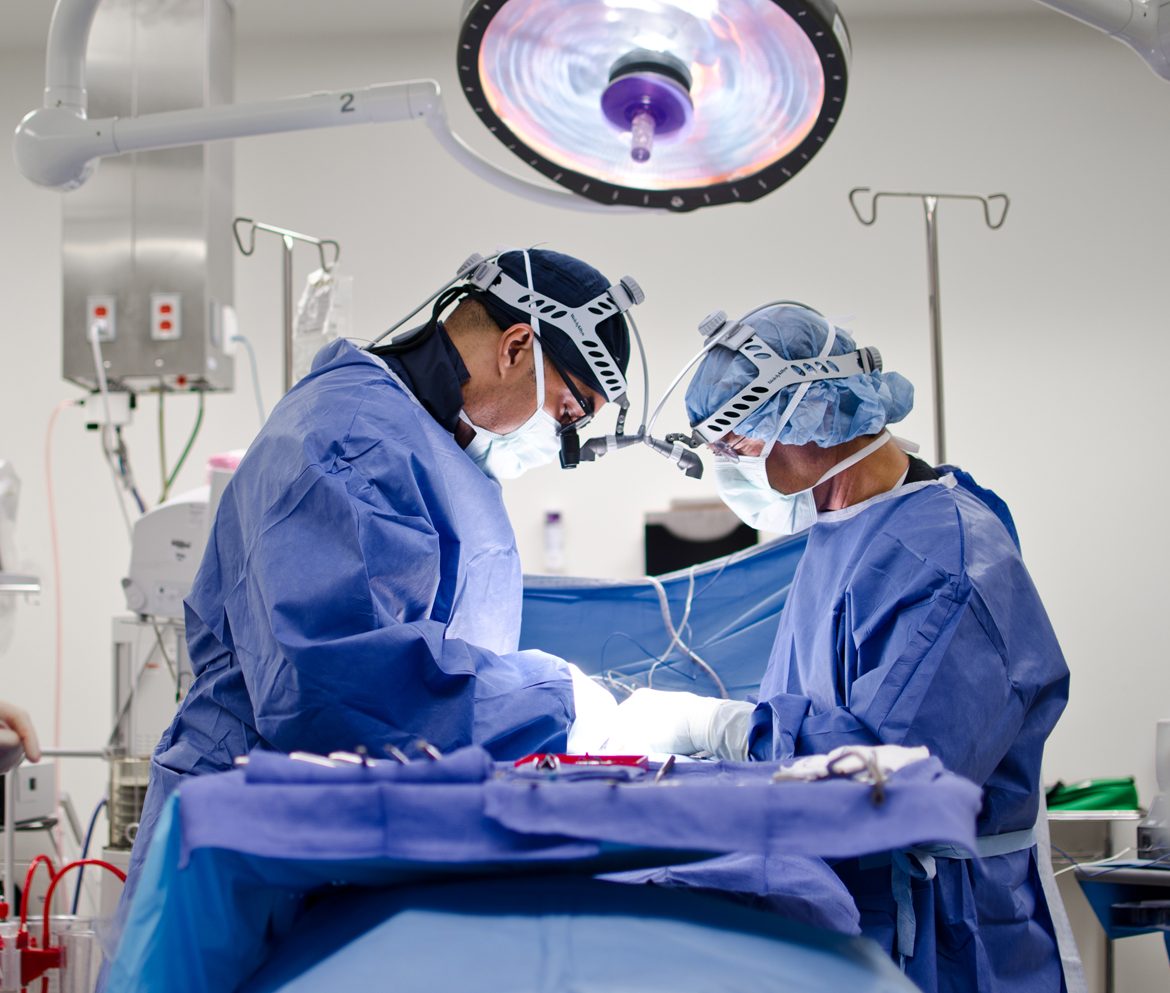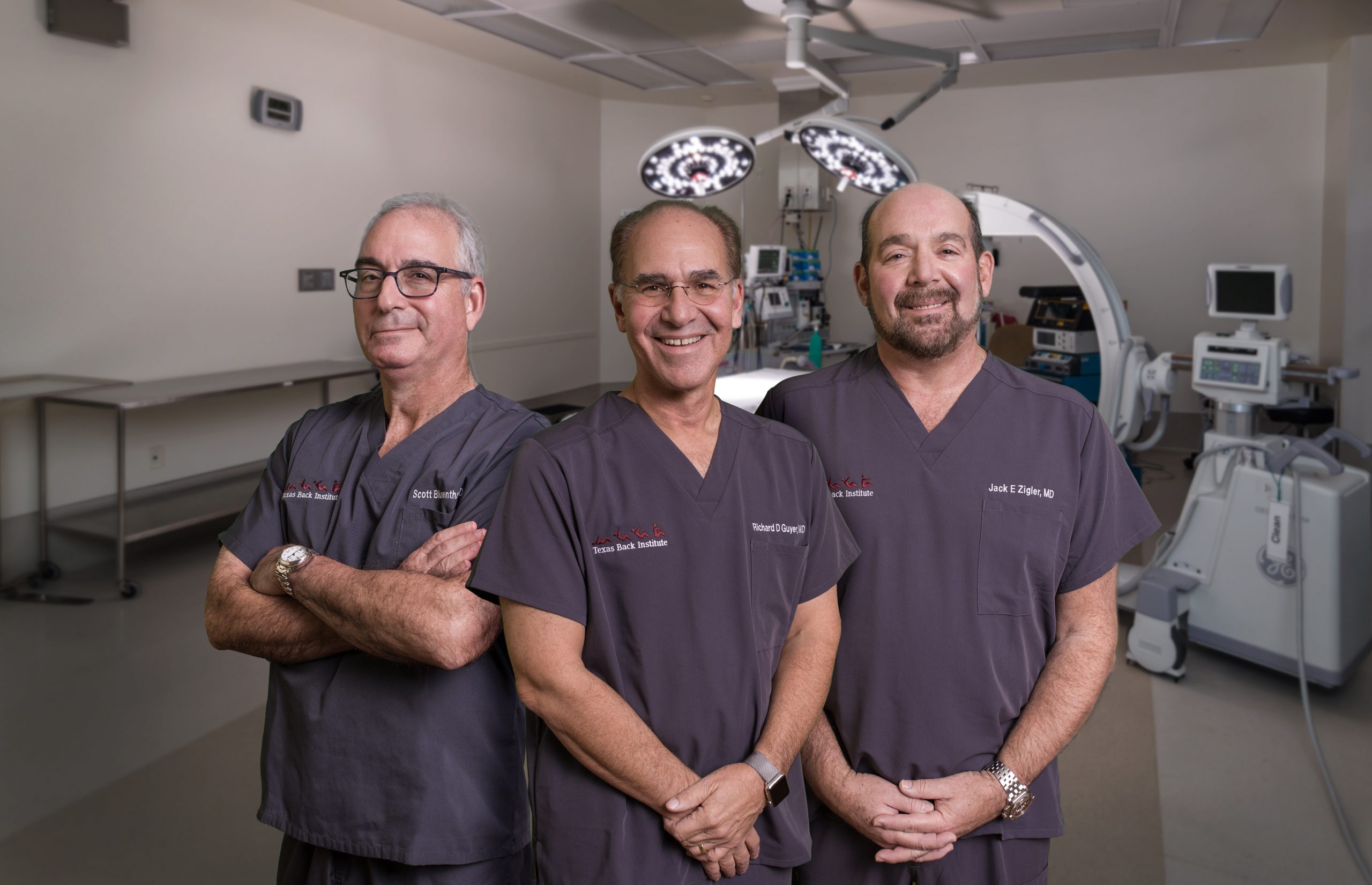Anniversaries serve an important function. They allow us to reflect on how far we have come, and where we can still go in the future. This year is the 20th anniversary of the artificial disc replacement procedure being performed at Texas Back Institute and thousands of patients are celebrating with them!
As the first year of a new millennium, 2000 was a particularly momentous time. The first International Space Station crew arrived to live in outer space and after fifty years, cartoonist Charles Schultz drew his last “Peanuts” strip. Additionally, in March of 2000, at Texas Back Institute, three world-class spine surgeons made medical history by performing an artificial disc replacement procedure. Over the 20 years since, more than 3,500 patients have come to understand the significance of this surgical advancement.
Three TBI surgeons – Drs. Scott Blumenthal, Richard Guyer, and Jack Zigler – have been the pioneers in the application of artificial disc replacement for motion preservation and they are responsible for improving the lives of thousands of patients. Each bring a unique perspective and expertise making this innovative advancement extremely monumental for the industry.
What is an Artificial Disc?
 “An artificial disc is very much like a hip or knee prosthesis which is made out of metal and plastic,” Dr. Guyer said. “We surgically remove the diseased or injured disc and put this artificial disc in its place. This allows the patient to avoid having a fusion of two discs and they can return to normal movement.”
“An artificial disc is very much like a hip or knee prosthesis which is made out of metal and plastic,” Dr. Guyer said. “We surgically remove the diseased or injured disc and put this artificial disc in its place. This allows the patient to avoid having a fusion of two discs and they can return to normal movement.”
“Discs are spacers between the bones, which are the building blocks of our spine,” Dr. Zigler added. “Sometimes our natural disc will wear out, which can cause a pinched nerve or reduce its ability to absorb shock. An artificial disc allows us to replace a damaged disc with one that will not stiffen up the spine, which occurs with the fusion process.”
Disc Replacement vs. Fusion Surgery
“One of the advantages of a disc replacement rather than a fusion procedure is that we can preserve motion in the neck or lower back of the patient,” Guyer said. “This is a huge benefit to the patient. Additionally, we know that fusions will often cause degeneration in the next vertebra level up, but we now have 10 years of research that suggests that the chances of this occurring in a replacement is about one-third or one-quarter the chance of a fusion procedure.”
“Disc replacement also offers other advantages,” said Zigler. “Rehabilitation occurs quicker with patients who have the disc replacement. They can return to a more normal range of motion, and without the stiffness of fusion, it allows the rest of the spine to age more normally.”
replacement. They can return to a more normal range of motion, and without the stiffness of fusion, it allows the rest of the spine to age more normally.”
“Plus, the fusion procedure requires a patient to be in a brace for several months,” Blumenthal added. “This is not the case with disc replacement. The patient is up and around, almost immediately, and the healing process is expedited.”
“We use a minimally invasive approach with disc replacement,” Guyer said. “There is less tissue destroyed in the process and this allows the patient to be discharged a day or two after surgery.”
A Good Candidate for Disc Replacement Surgery
“The ideal patient for the cervical disc replacement is someone who has already been told they need a fusion,” Blumenthal said. “Over time, our natural discs can become ruptured or bulged and touch a nerve which can lead to severe neck and/or arm pain. If a patient’s pain does not respond to conservative treatment, disc replacement is considered.”
“The lumbar disc replacement is a different situation,” Zigler said. “It’s mainly done for ‘mechanical’ back pain which occurs when the disc wears out and is not acting as a shock absorber. Lumbar patients typically fail to get better after six months or so and most have been good candidates for the fusion procedure. With disc replacement however, patients will have quicker recovery, motion preservation and better protection for the rest of their spine.”
A Patient Shares His Story
Why Research is Critical to Patient Outcomes
“We’ve always taken pride in the research that we have done,” Guyer said. “We’ve participated in 14 FDA trials of the artificial disc and that gives us confidence that we are delivering the best possible care to the patient.”
“From the very beginning, we have been involved in numerous studies with the FDA and we’ve been fortunate to have been authors of some of the most important papers that have been published about disc replacement,” said Zigler. “Since we have completed more than 3,500 disc replacements, it gives us great confidence when we are talking with patients about whether this procedure is right for them.”
“And our research continues,” said Blumenthal. “While device companies will finance the research on some types of lumbar disc replacements, we have decided to fund our own research for a lumbar disc replacement next to a fusion disc (called a ‘hybrid).”
“I am particularly proud of the work we three have done,” Guyer concluded. “We started 20 years ago on this journey and this means we’ve been around the block a time or two. We’ve all had patients who have come back to us after having disc replacement and said ‘Doc, you’ve changed my life.’ This is the type of feedback that keeps us going. This is why we have committed decades of our career to this specialty!”
Watch more from Drs. Scott Blumenthal, Richard Guyer, and Jack Zigler below:
Are you experiencing recurring back pain? The spine experts at Texas Back Institute can help. Contact us to set an appointment.

